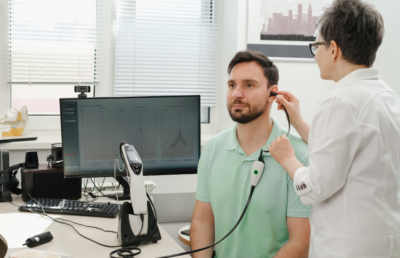What’s in store for hearing devices over the next year? It seems like the pace of progress is only speeding up. Here are just some of the trends we’ve seen developing:
Lower Costs for Patients
The ongoing public conversation about over-the-counter hearing devices has had an effect on the entire hearing aid industry. Whereas manufacturers before knew they could charge higher amounts, increased competition means that the prices are coming down across the board. This, of course, is great news for patients.
Reductions in Size
One wonderful part of technological progress is the ability to fit more power into smaller packages. For some patients whose type of hearing loss necessitates the more visible receiver-in-canal hearing aids and outside-the-ear hearing aids, this can make a big difference. For example, this year,Unitron’s Moxi Nowbecame the smallest RIC hearing aid on the market, giving patients who are self-conscious about the visibility of their hearing device a new option to consider.
New Hearing Algorithms
For a long time, hearing aids focused on amplifying the sound from the person the patient was conversing with, and cancelling all other noise in order to improve clarity. Now, new algorithms are able to create unique soundscapes that more closely match the how natural hearing works. For instance, theOticon Opnstill cancels extraneous background noise but can identify multiple speakers and amplify all of them simultaneously, which makes hanging out in a group setting much easier. For people with severe-to-profound hearing loss, theReSound ENZO 3Doffers improved spatial awareness and clearer speech amplification in noisy environments.
Instant Custom Fit
Many hearing aids that offer a custom fit involve the audiologist taking a mold of the patient’s ear canal and submitting it to the manufacturer where the hearing aid is custom made to that patient’s ear. Some new technologies now allow patients to get the same level of comfort without leaving the doctor’s office. The newSilk Primaxuses a new kind of material that is reported to allows comfort even without being custom-molded. For patients, that means a shorter wait time to getting their new hearing aid.
Remote Fine Tuning
Many hearing devices require a visit at the audiologist office for changes to be made. With the announcement of @Resound Linx3D, patients are able to send a fine tuning request to the audiologist for adjustments. No need for being stuck in traffic now!
All of these advancements are a boon to patients in need of a hearing device. These devices are smaller, more comfortable, more stylish, cheaper, and better in every other way than devices from even 5 years ago.
When looking for your next hearing device, the number of options may be overwhelming. Contact usto speak to Dr. Vetter and get a recommendation for a hearing device based on your level of hearing loss and your lifestyle.
New Hearing Device Technologies on the Horizon





